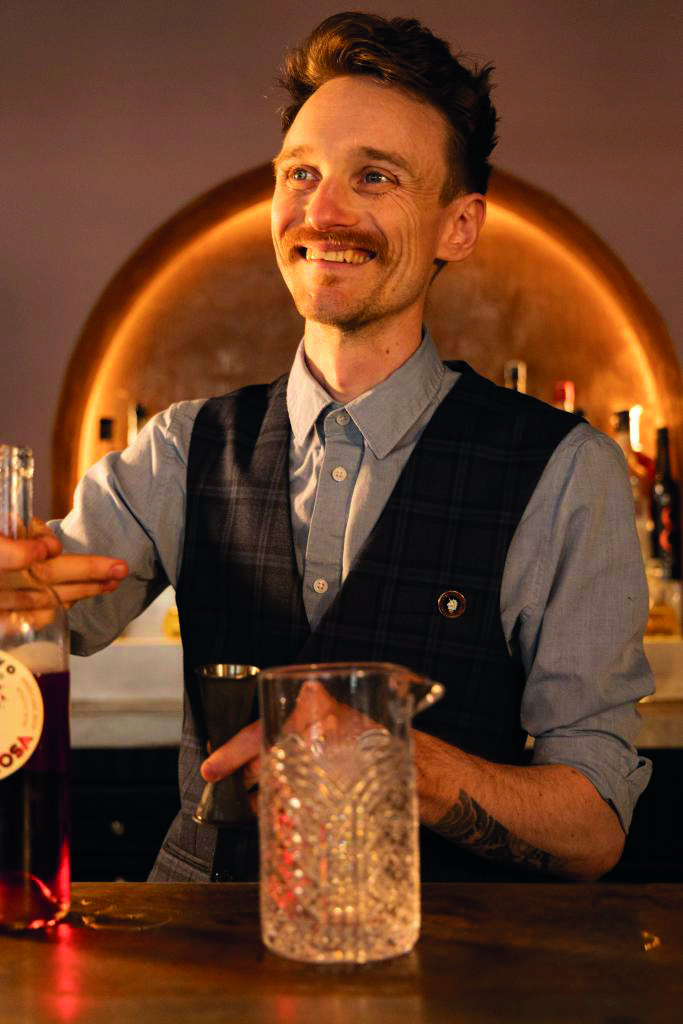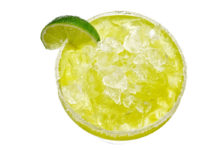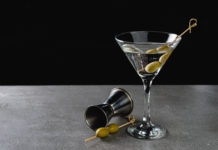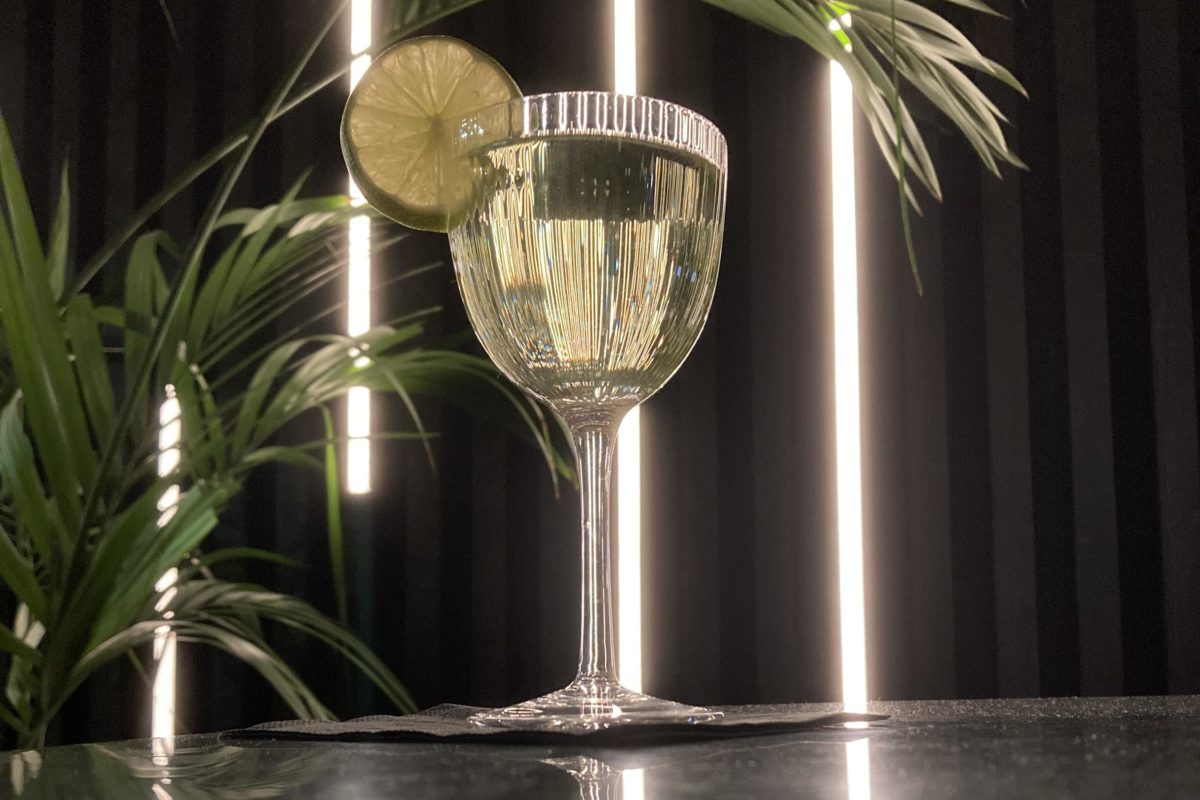 The Gimlet, is an underappreciated classic, that is made up of gin, lime cordial and not much else. Originally a naval beverage that comprised the two parts of a sailor’s rations, the gimlet is the one of those accidental concoctions that predates cocktails, it’s a perfect pairing of two key components of a drink: health and social benefits.
The Gimlet, is an underappreciated classic, that is made up of gin, lime cordial and not much else. Originally a naval beverage that comprised the two parts of a sailor’s rations, the gimlet is the one of those accidental concoctions that predates cocktails, it’s a perfect pairing of two key components of a drink: health and social benefits.
The cordial, originally Rose’s Lime Cordial from Leith, would help prevent scurvy, and the booze would stop cabin fever. Consumed on ship, the drink reached land and then became a gin palace mainstay, and the gin palace slowly morphed into the original cocktail bar, albeit without Challenge 25. More like Challenge, 2.5.
“You can walk? Have a gimlet lad, exactly what every malnourished wee Victorian urchin needs to start their day.”
Nowadays it’s considered a bit tart (flavour wise) and a bit basic. For me it’s a fantastic drink that can be enough to draw you back again and again to one particular bar. The importance of this draw cannot be stated enough.
The Gin Palace was one of the first social spheres where it was about drinking something you couldn’t drink at home, this merged into the cocktail bar, the hotel bars of the Fin de Siecle and into the Jazz Age, the below-the-ground caverns that captured the intense FU spirit of people wanting to develop a social and abbreviated consciousness within the speakeasy, and then into again the night club style high volume cocktail bars of the 80s and 90s, and then into the throwback hipster attempts at cashing in on all these styles of venue in the first decades of this century.
And these places existed in the upper echelons, more of an event venue than a diurnal haunt like your ale house, taverns and pubs.
But post-covid and balls deep in this cost of living crisis, isn’t it time to consider a cross class venue with all the perks of the pub and the bar, but with none of the detrimental health effects?
Your electricity bill, coupled with your council tax, have become the greatest crime duo of this still young century, the Bonnie & Clyde of the Conservative Class War and it is now more vital than ever that social spaces cater to the desires and the needs of the punter.
Not to cater to the hyper rich, nor the apathetic, a drink should work for both customer and bar owner. There will be a mark up, of course there is, ethical capitalism has to start somewhere, and starting with the glass is the best place it can.
In Osaka, using bars that function as a pub with the choice of cocktails is the common norm. One bar and restaurant I used to frequent in Shinsaibashi was run by a dude who was the absolute perfect host. Warm greetings, remembering your choice of drink, great suggestions and earnest chat meant that the place operated on three fronts, as a bar, a restaurant and a social venue, with a mariachi band on Friday and a jazz band on Saturday.
It had it’s locals and regulars, who in my short time I came to see not as fixtures or fittings, but as a dynamic energy that attended the bar. Shinsaibashi is famous for it’s Girl Bars, a troublesome concept to explain to westerners, and a lot of the girls would hang out here, as would their pimps. But in amongst these people, who worked earnestly and honestly, there were shop workers, businessmen and women, bartenders, boozehounds and the occasional teacher.
The owner excelled at hosting in a way I’d never seen before, a mixture of charisma, slapstick and a mild hint at a history of violence.
I visited this place numerous times, before I shook hands with the owner and one of my friends pointed out his fingers, or rather, lack of. I thought it was the result of a badass kitchen accident, only to be proven once more how little I knew of the world.
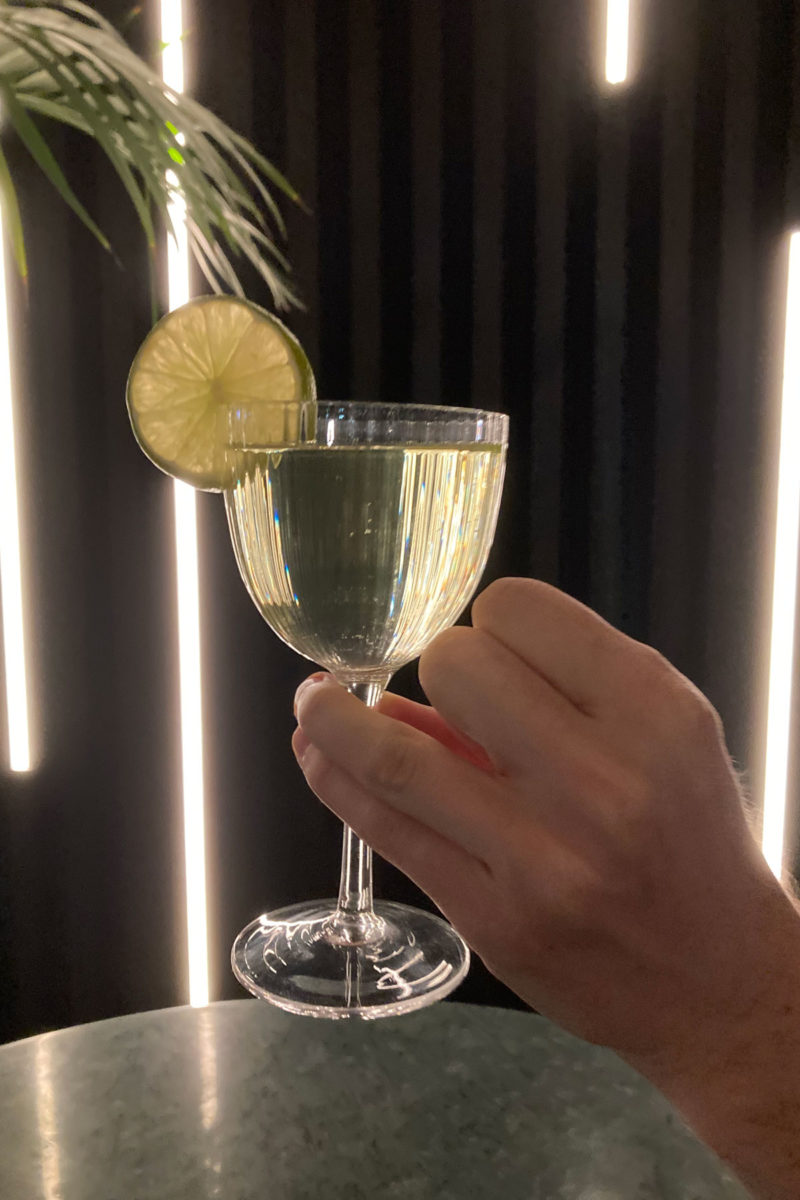
Missing fingers means Yakuza, and show that you had to perform penance. They are customarily lopped off in a ceremonial manner.
The place took on a different, no less impressive hue to me after that. The yakuza are scary, that’s what everyone says. And here I was drinking in the most chill, polite and consistent bars I’ve ever been in.
And that consistency? That’s what it was all about. My first night in here, drawn in by the laughter and the unique shape of the bar, I had seen gimlet on the menu. I hadn’t seen it anywhere else in north of two years at this point. I ordered one and the owner made it, stirring with the hand that was minus some digits.
It was lush, tart, sticky and boozy. The perfect gimlet. Born in the port town of Leith, a place I called home for years, it had travelled the sea and the skies, and here I was in the furthest port town I could find, drinking one that blew my mind in it’s simple approach.
I had no issue paying whatever he asked (I subsequently got one for free at each visit) as the way it was made, the skill, the cheeky laughter, the amiable presence, the stories I could tell from this bar (and there are many– one time there was an Osaka vs. Hiroshima baseball game and I audibly supported the wrong team…) all made it worth every yen.
And he used Rose’s Lime Cordial.
